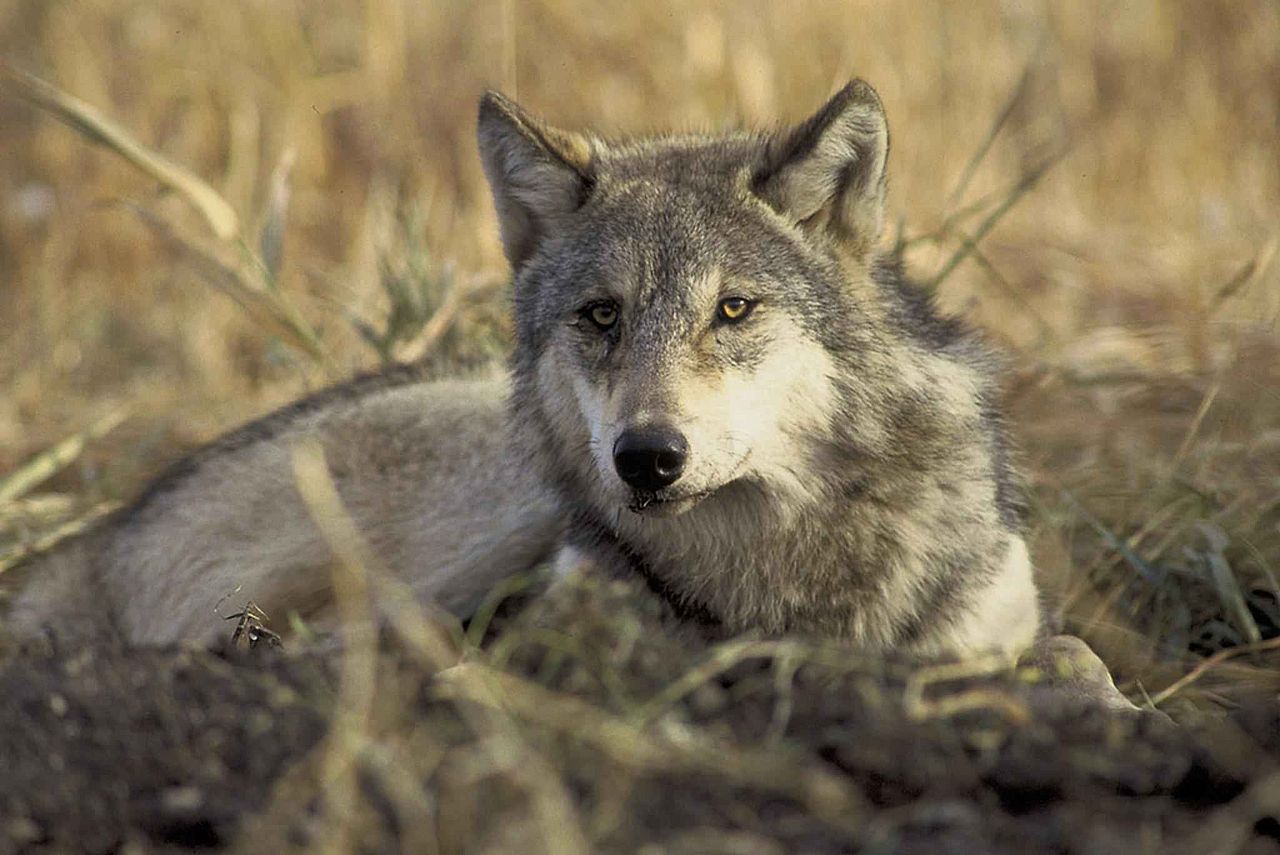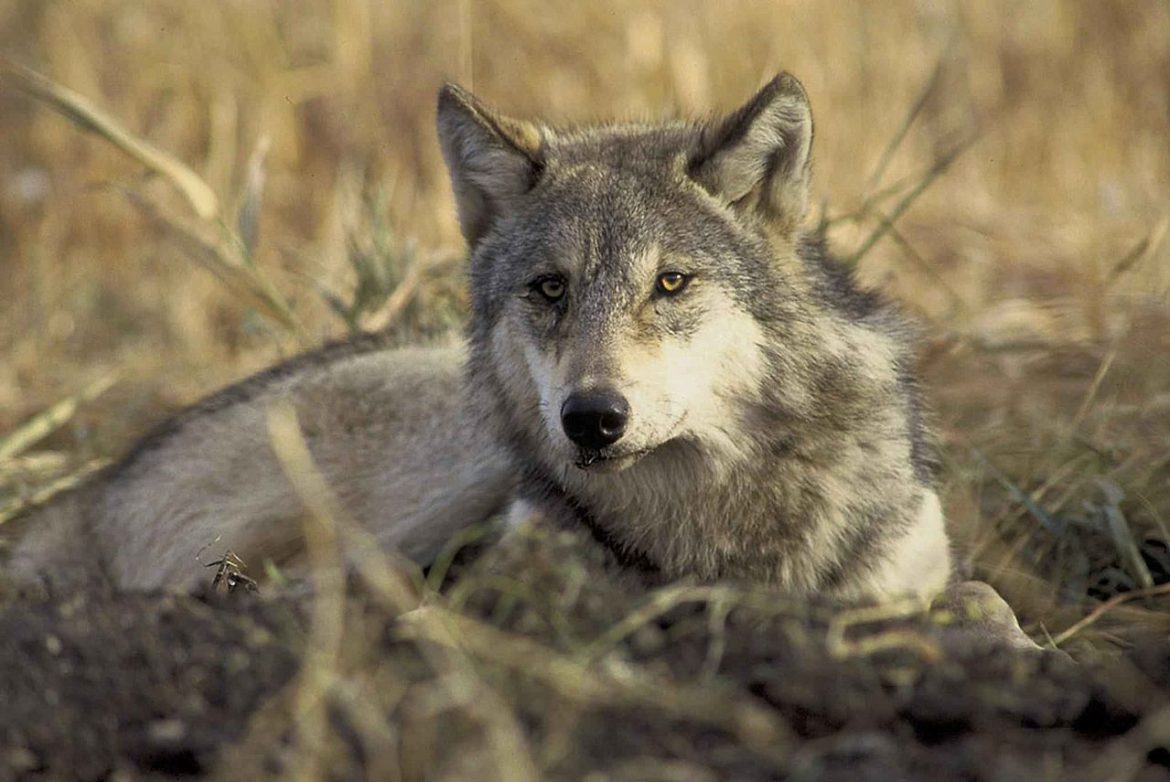Update: Colorado voters passed Proposition 114 in the November 3, 2020 election
Coloradans will soon decide whether to restore endangered gray wolves to our home state. While more than 80 percent of Coloradans have said they support the initiative, it is critical to make sure all those supporters check YES when they fill out their ballots this fall for Proposition 114. This upcoming ballot initiative is important to me, as I grew up in Colorado and am once again a Colorado resident and voter this fall. I’ll be voting for this measure for a whole host of reasons.
For one thing, I’ve been moved by the testimonials of many Indigenous people of this land. In endorsing the ballot initiative, many leaders of the Global Indigenous Council shared powerful, personal stories of their own. A number of testimonials from Council leaders are available here on the Council’s website, including the following from Nolan Yellow Kidney, a Blackfeet Sun Dance Leader: “I have ties to the Wolf Spirit. Some understand that concept, but some don’t. When I was 11 years old, I fasted with my dad and his friends. On the last day of our fast, this Spirit came and sang a song to us. He spoke Blackfeet to my dad, and he gifted the song to me – the song Mah-Kwi-Siks, that wolves sing when they hunt. My respect for the wolf is immense. I have been with wolves many times when I have been in the woods, and not once did they ever make a threatening move toward me. I carry this effort into my prayers, to return the wolf to that land my people traveled long ago, and to honor the connection I have with the wolf from that fast when I was a boy.”
This reintroduction measure will also provide opportunities to incorporate Indigenous knowledge and perspectives into managing Colorado’s wildlife and wild places. Combining Indigenous wisdom with the latest science, we can integrate the very best practices to our restoration efforts in Colorado. The ballot initiative would direct the state to develop a plan to restore wolves to Colorado in a manner that is humane, effective, affordable, and respectful of the needs and concerns of all Coloradans. Describing the value of this ballot initiative on the Global Indigenous Council website, Chairman Ben Nuvamsa, Hopi Bear Clan Elder and former Chairman of the Hopi Tribe, said that, “In a biological sense, the wolf plays a vital role in the ecological chain and thus, contributes immensely to the ecological balance. Removing the wolf from the environment in Colorado had a damaging impact on not just the ecological balance, but also upon the spiritual lifeways of indigenous people of the region.”
For me, the true importance of this ballot initiative hit home earlier this summer when I saw a wolf in the wild for the first time.
My partner and I were returning from a long weekend trip to Yellowstone National Park. The day was perfect—sunny with a sky so bright blue you do not believe it is real. While passing through the Lamar Valley, we saw a group of cars amassing along the stretch of road. We pulled over, and when we asked our fellow park visitors what they were seeing, they whispered, “a wolf!” My partner and I looked at each other, saying, “No way. Not possible.” We parked as quickly as we could to take a look, and sure enough, a black shaggy wolf lumbered through the meadow stretched before us. No one could speak, we were all so moved by watching this animal in her native habitat.
It has been a long time since wolves roamed this land: by the early 1900s, they had been largely eradicated. In the past 25 years, however, wolves have slowly been reintroduced into specific areas, including Yellowstone, where their return has been hailed as one of our country’s greatest conservation success stories—proof that it’s not too late to right our wrongs.
From reintroductions in Yellowstone and beyond, and by incorporating the knowledge of Indigenous leaders in restoring ecological balance, we have learned so much about the benefits that wolves bring to our ecosystems and how we can all coexist. For example, when wolves were first introduced to the Yellowstone area, conservation groups worked to establish compensation programs which are now administered by state and federal entities to help offset any new costs that ranchers might encounter. Since that time, many organizations—including NRDC—have worked with ranchers and wildlife agencies in the Northern Rockies to develop a suite of practices that help reduce conflicts between wolves and livestock, ensuring that both can have a role on the landscape. Using fladry, fencing, range riding, and many other techniques, ranchers are able to avoid conflicts with wolves, and programs that assist ranchers with the costs and implementation of these practices are now in place and growing.
I personally cannot wait to vote YES for Proposition 114 this fall as a Colorado voter. I hope you will join me and the NRDC Action Fund in returning wolves to their healthy and rightful place in our ecosystem. We owe it to ourselves and to future generations
To learn more about the wolf ballot measure (also known as Proposition 114) and other candidates and issues on the Colorado ballot, please take a look at our Colorado voter guide HERE. To check your registration, register to vote, or register to vote by mail safely, you can use NRDC Action Fund’s handy site HERE.
Kayla Calkin is the political director of the NRDC Action Fund.


